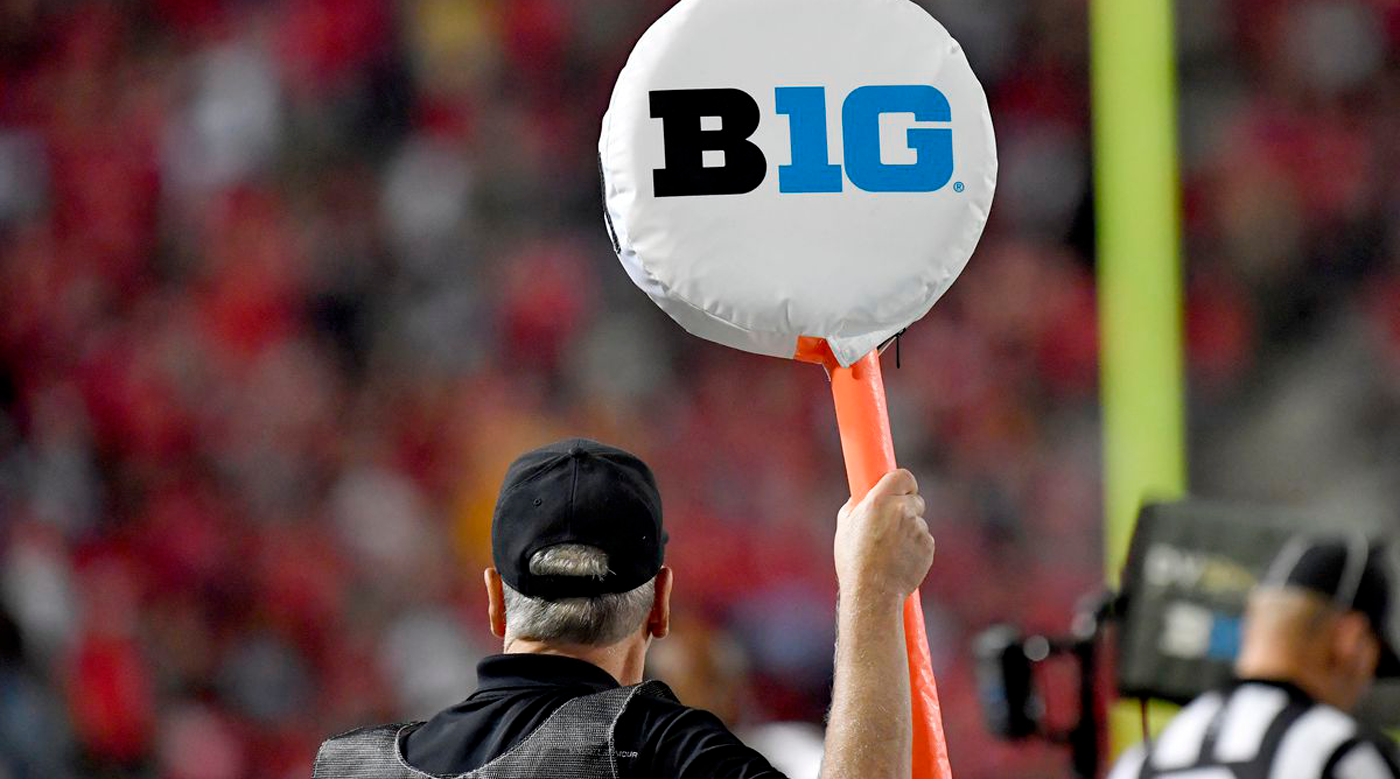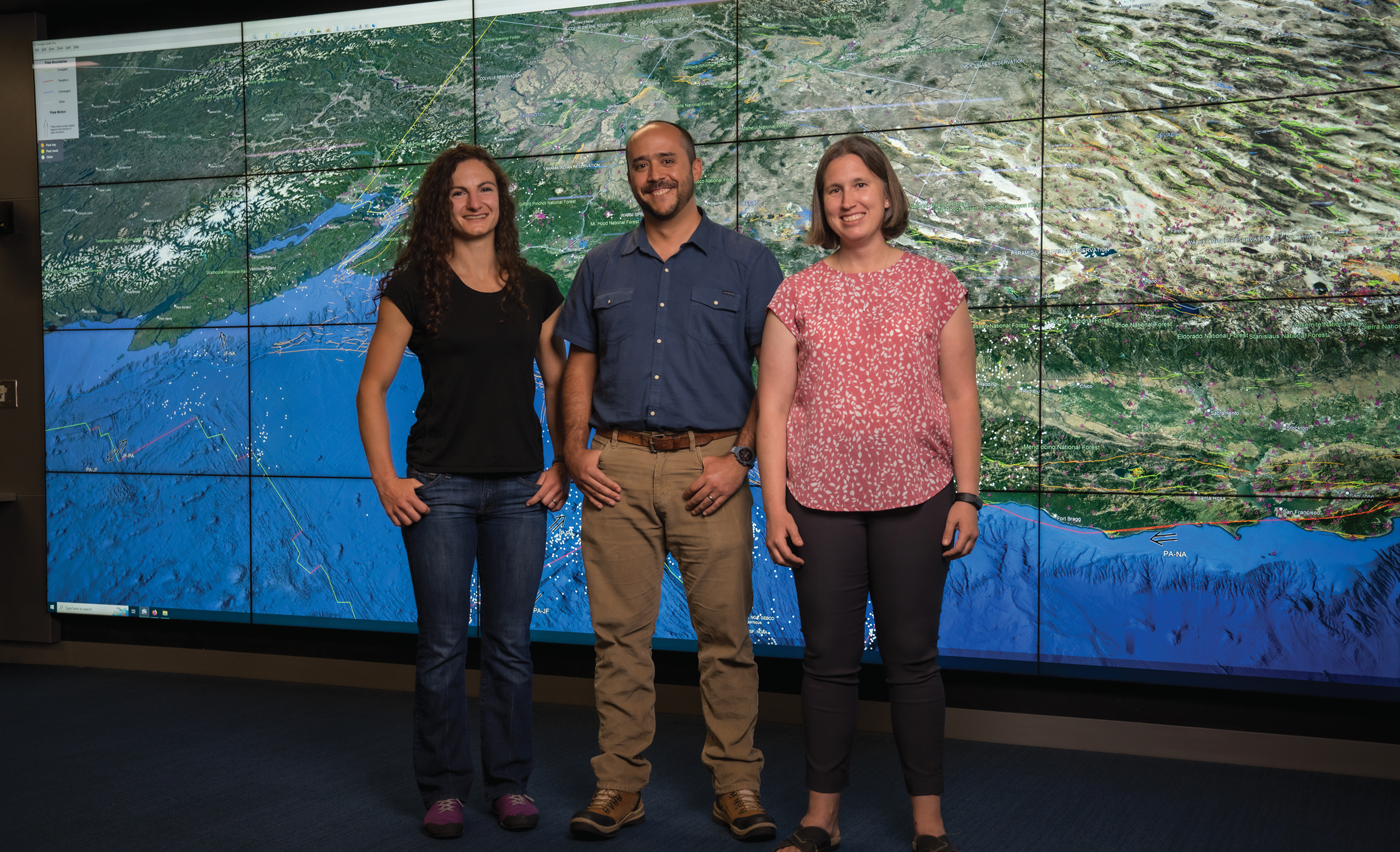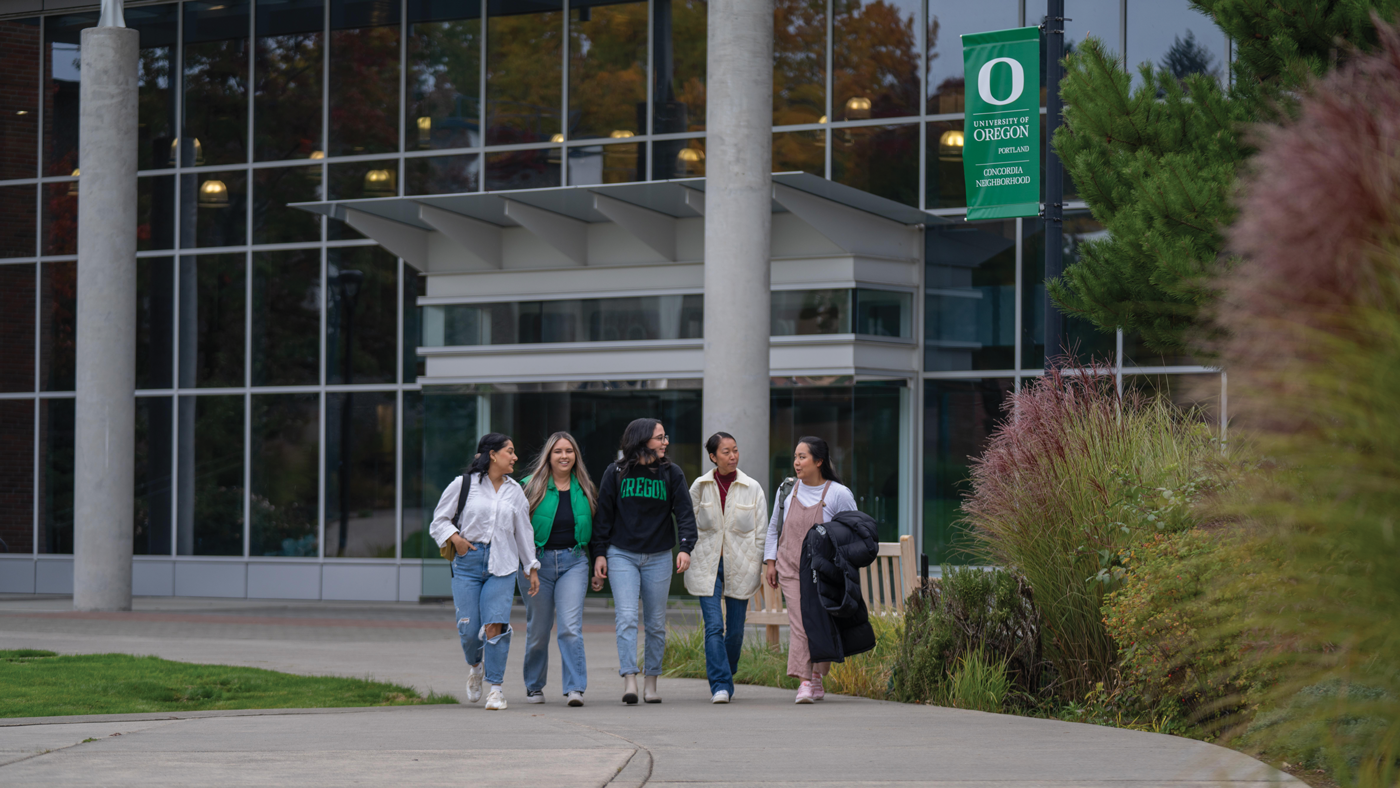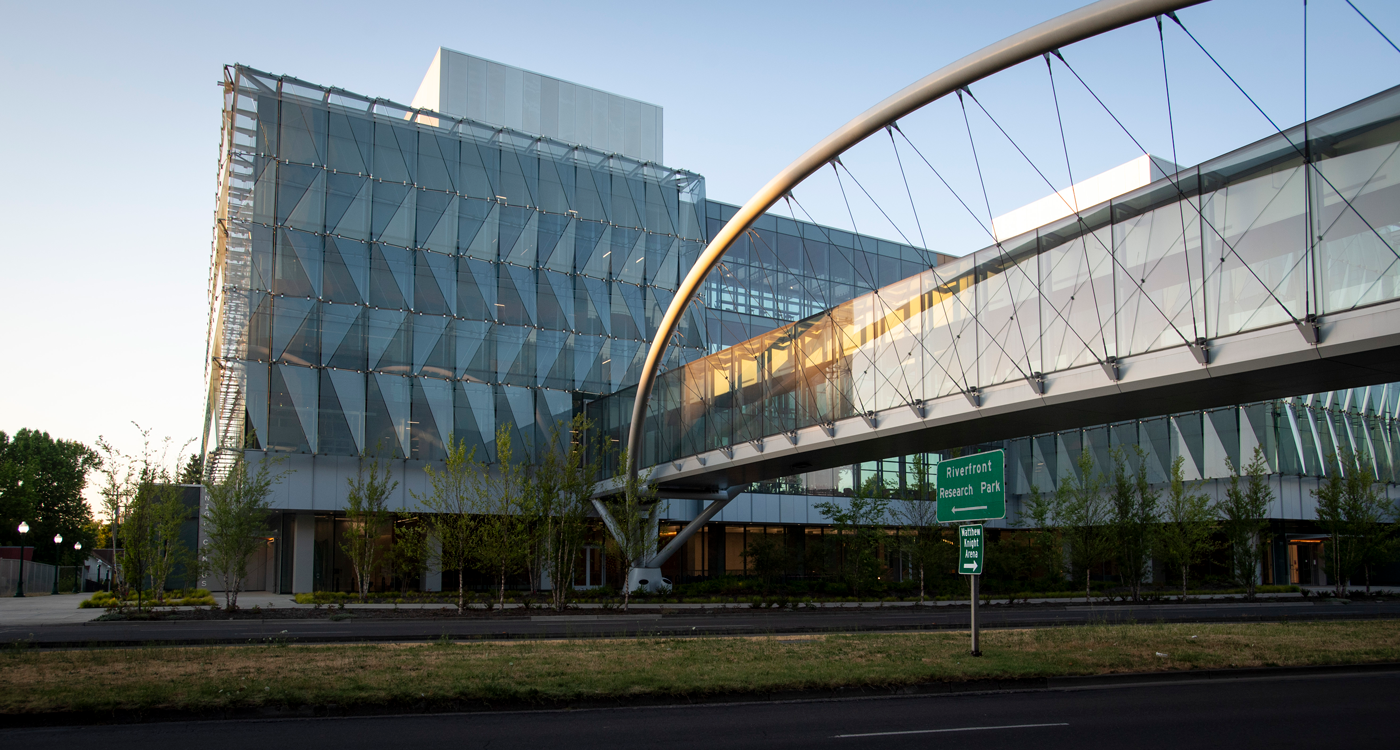Beyond the iconic green and yellow, past the roaring crowds at Autzen Stadium and Hayward Field and PK Park, and beyond the historic halls of learning lies a University of Oregon few outside of the campus community know. The construction of its first building, University Hall — formerly Deady Hall — commenced in 1873, and for 10 years it was the school’s only building. Today, there is much that is new about the University of Oregon, including new buildings on the Knight Campus, new degree programs, and groundbreaking research that will change lives both locally and across the nation and globe.

School of Computer and Data Sciences
In 1876, 177 students were enrolled at UO. It took until 1915 for that number to climb above 1,000. In 1962-63, there were 10,491 students. In 2012 there was a record high of 25,591 students. In 2023-24, enrollment is just under that at 23,834.. While UO has had a computer science department since 1970, today’s students have access to a new department, a new school, a new major in data science as of 2020, and a new major in cybersecurity as of 2023, the year the School of Computer and Data Sciences opened.
Hank Childs is interim director of the School of Computer and Data Sciences. His predecessor, Joe Sventek, who retired in June 2024, proposed creating a data science department. “There’s so much synergy between data science and computer science, and we see so much potential for how these areas can work across campus and in the region, that we formed the school to combine a data science department and a computer science department,” Childs says.
A new director of experiential learning position will cement the focus on learning through projects, internships, hackathons, and datathons rather than lectures, in order to get students as prepared for the workforce as possible. Graduates still find roles at tech giants, but they’re also finding employment in non-tech companies that are harnessing these skills. For instance, one of Childs’s students, Kora Dumpert, defended her undergraduate thesis on the topic of machine learning and fashion, and went on to help the company Wayfair identify trends.
The school prioritizes inclusivity and is developing offerings for students of all experience levels, including introducing data science and computer science classes with no prerequisites. “I’d love for every UO student to take these intro classes and feel literate in both fields,” Childs says.

Welcome President Scholz
President John Karl Scholz, the 19th president of the University of Oregon, is more than a year into his tenure. “This university is a remarkable place,” he says. Scholz and his wife, Melissa, came from Wisconsin, and they have fallen in love with Oregon, with Eugene, and with the university.
“It’s remarkable for its beauty, the outdoors, the weather, low humidity, and coming from the Midwest, the absence of mosquitoes in the summer is lovely,” he says with a laugh. “If you like wine, it’s wonderful. The restaurants are fantastic.”
One of Scholz’s primary goals is to remove impediments to timely graduation. Other than explicitly five-year programs, “Finish in Four” will be the new campus mantra. Along with other successes we look at in this article, Scholz highlights the College of Education, which influences curriculum across the state and beyond. The annual Oregon Bach Festival, which began in 1970 through the School Of Music, brings some of the finest musicians in the world to Eugene. “The Jordan Schnitzer Museum of Art has a spectacular collection, as well as rotating shows,” Scholz says. “And the people at the Museum of Natural and Cultural History really roll up their sleeves to get people learning.”

The Big Ten Conference
On August 2, the University of Oregon officially joined the Big Ten Conference. But joining the Big Ten doesn’t just have ramifications for sports.
“There are very, very exciting opportunities ahead of us as a member of the Big Ten,” Scholz says.
Membership in the Big Ten conveys stability in the evolving landscape of intercollegiate athletics, and it elevates the visibility of the University of Oregon across the country. “That’s important,” says Scholz, “as we want to add to the diversity of the campus with students from outside Oregon, from around the world.”
There’s also a little-known aspect of the Big Ten called the Big Ten Academic Alliance. Through that, the UO shares resources with other Big Ten institutions, which collectively provides access to the third largest library in the world, behind the British Library and the Library of Congress. The alliance has innovative programs for teaching less commonly studied languages. They have outstanding leadership training programs, and many current UO faculty have research partnerships with faculty at schools across the Big Ten.
Scholz pointed out one more thing to be proud of: The University of Oregon athletics department is financially self-sustaining. The athletic program uses no tax revenue, state resources, or anything from the academic side of the budget. “And with the resources of the Big Ten, we’ll be able to preserve that,” Scholz says.
The UO, one of the nation’s leading public research institutions, is also a member of the Association of American Universities, founded in 1900. The 71 member universities earn the majority of competitive federal research funding, so membership has its benefits there, too.

CRESCENT
The Cascadia Region Earthquake Science Center, or CRESCENT, is the nation’s first subduction zone earthquake hazards center. In 2023, the National Science Foundation awarded $15 million to establish CRESCENT.
“Studying earthquakes is interesting and important to us because we live in a subduction zone,” says Diego Melgar, CRESCENT’s director. Melgar explains that the Earth is made up of tectonic plates which are “like rigid rafts of rock floating atop a gooey mantle.” They move very slowly, about as fast as a fingernail grows, but inexorably. In subduction zones, these plates crash into each other and one of them goes underneath the other one. Earthquakes are common along all plate boundaries, but the biggest earthquakes happen at subduction zones.
“We need to grapple with the fact that these really big earthquakes are a fact of life in the Pacific Northwest, and that’s why CRESCENT exists,” he says. “Our job is to get the brightest minds in the country together to study this.”
CRESCENT unites geoscientists nationwide, creating a comprehensive approach for predicting and preparing. It also fosters partnerships between federal, local, and state agencies, legislators, and emergency managers, including from Canada, to discuss and share resources. Computer simulations can model thousands of future possibilities for earthquakes and tsunamis, and machine learning analyzes the numerous small earthquakes that happen all the time that go unnoticed. “We don’t have to wait for the earthquake to happen to see what it’s like,” Melgar explains.
Another important goal for CRESCENT is working to improve diversity in geoscience education. Melgar acknowledges that geoscience is the worst of all the physical sciences in terms of representation of women and folks from minoritized backgrounds. CRESCENT is making space for everyone, Melgar says, from Latinx folks in the Willamette Valley to tribal members worried about coastal tsunamis. “It’s ambitious, but if we don’t start now, then when?”
While earthquakes often evoke helplessness, Melgar feels empowered. “We know how to prepare for big earthquakes,” he says. “We know how to build for big earthquakes. We can anticipate the tsunami. And armed with that knowledge, there’s all sorts of things we can do.”
 The Ballmer Institute
The Ballmer Institute
Katie McLaughlin is executive director of the Ballmer Institute, established through a gift from Connie and Steve Ballmer. It offers an innovative program to train child behavioral health specialists. The UO is the first and only institution in the country to offer this kind of undergraduate degree program, and the first cohort of students is joining the new UO Portland campus this fall.
“The vision of the Ballmer Institute is that access to high-quality mental health support is a fundamental right of children and families,” says McLaughlin. “But that vision requires expanding the behavioral health workforce to meet the growing need for support among kids and adolescents, and doing that requires new approaches.”
The program aims to expand and diversify the behavioral health workforce by offering graduate-level training to undergraduates. This approach focuses on early intervention, increases access to quality behavioral health support, and accelerates workforce readiness. McLaughlin envisions this becoming a national model.
“While this is a really new approach in the U.S.,” explains McLaughlin, “this was inspired by global work demonstrating that not only is it possible to train folks at the bachelor’s level to deliver effective behavioral health services, but that providing this type of training at the undergraduate level can rapidly increase access to care.”
In 2022, UO finalized its purchase of the former Concordia University campus in northeast Portland, which will be used for this “2 + 2” program. Students complete two years of core education courses and prerequisites, either at UO in Eugene or elsewhere, then transition to UO Portland for two years of intensive instruction, including supervised practice.
The Ballmer Institute also offers a free “graduate micro-credential” program for existing professionals working with children. This remote three-course series equips educators with immediate, practical behavioral health skills. “It’s something you can learn in class today and bring into your classroom tomorrow,” McLaughlin says. Already, 150 Oregon educators have participated, with a third cohort starting this fall.

The Knight Campus
The Knight Campus launched in 2016 with a $500 million gift from Penny and Phil Knight (BBA ’59). The first building opened in December 2020. In 2021, a second $500 million gift from the Knights launched Phase 2. When completed, Building 2 on the Knight Campus — more properly known as the Phil and Penny Knight Campus for Accelerating Scientific Impact — will house a 185,000-square-foot bioengineering and applied science research facility at 1100 Riverfront Parkway in Eugene.
“The mission of accelerating the translation of our work into positive societal impact is what makes the Knight Campus unique,” says Robert Guldberg, executive director of the campus. “That’s what’s allowed us to recruit some really fantastic faculty and students, even though we’re a brand new organization.”
Building 2 will host a “dual-shield” PhD program in bioengineering, with students collaborating with both Oregon State University and UO faculty, along with maker spaces, startup incubators, and a facility for fabricating human tissue for drug testing. The curriculum builds in things like science communications, entrepreneurship, and innovation from the start, in addition to technical training. Intentional building design creates a collaborative environment, with open labs and what Guldberg calls “neighborhoods of people” who collaborate together. The campus provides access to high-tech equipment that many labs could not afford on their own.
Felix Deku, an assistant professor at the Knight Campus, secured an NIH grant to develop advanced brain implants. More flexible and durable implants would be useful for treating disorders like Alzheimer’s and Parkinson’s. Calin Plesa, another assistant professor, is pioneering large-scale gene synthesis technology. This allows thousands of experiments to take place in a single test tube, enabling creation of new proteins for biosensors. Plesa is also using machine learning to design proteins that could combat antibiotic resistance.
The Wu Tsai Human Performance Alliance, a collaborative project among six institutions, will be funded over the next 10 years by Clara Wu Tsai and Joe Tsai, owners of the Brooklyn Nets. “That project is trying to understand how we as individuals perform at our peak, from the molecular level to the whole body level,” says Guldberg.
Clinical studies are now underway on a Department of Defense trauma immunology program using machine learning to predict whether a patient is likely to heal or not by “listening” to blood cells. “The idea would be to give doctors a sort of ‘weather report’ from the beginning about whether their patients are likely to develop an infection or otherwise not heal from treatment, in order to intervene more quickly for those patients,” Guldberg explains.
The Knight Campus concept, born from a challenge by former UO President Michael Schill, aligned with Phil and Penny Knight’s vision for bold scientific advancement and risk-taking in order to attract top talent, foster innovation, and boost Oregon’s economy. “I’m proud to say all those things are happening, thanks to the Knights’ incredible generosity,” Guldberg says.
Innovation and Impact
From groundbreaking research to innovative programs, new schools, and a historic Big Ten move, the University of Oregon continues to push boundaries and create positive change.
“The more people can see the university, the more they understand the connections it has to the community and, I like to think, to leading better lives,” President Scholz says. “It’s really exciting to be part of that.”


